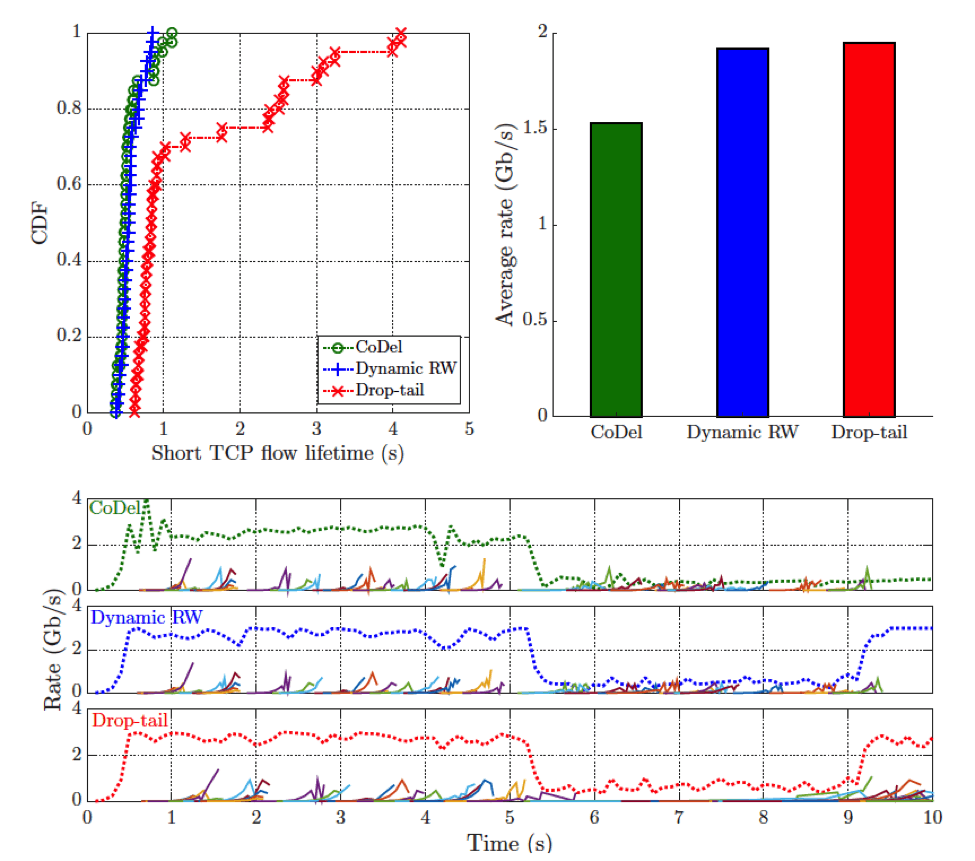Improved Network Performance Over 5G mmWave Cellular

In this project we aim at designing a transport layer protocol optimized for the mmWave access network, and for the new class of applications that it will enable, aiming to work seamlessly across a connection consisting of both wireline and wireless segments. In our recent ICC paper submission “The Bufferbloat Problem over Intermittent Multi-Gbps mmWave Links”, we have proposed a simple approach to solve some of the major issues related to TCP over mmWave that we observed in our previous publication: “Transport layer performance in 5G mmWave cellular”. Our solution, namely Dynamic RW, delivers high throughput while guaranteeing low latency, as shown in the figure below. The good news is that it does not require any modification of the TCP protocol.

The core idea, which is patent-protected, is to adapt the TCP sending rate based on the user channel conditions, in a cross layer fashion. To do so, we can simply tweak the advertised receiver window, which is a 16-bits field “window size” in every TCP packet HEADER, as shown here.

Driven by these promising results, we decided to try and implement this cross layer approach on a 4G LTE device running on an ATT network. We translated the simulated scenario from the figure above in a real life environment: Some background traffic – the download of an app – along with an additional short flow – a Youtube video. In the video below, we show the impressive gains that we can achieve on today 4G LTE networks. We expect to see much more benefits over mmWave, given its multi-Gbps and intermittent nature.

 2025 Brooklyn 6G Summit — November 5-7
2025 Brooklyn 6G Summit — November 5-7 Sundeep Rangan & Team Receive NTIA Award
Sundeep Rangan & Team Receive NTIA Award 2025 Open House
2025 Open House








